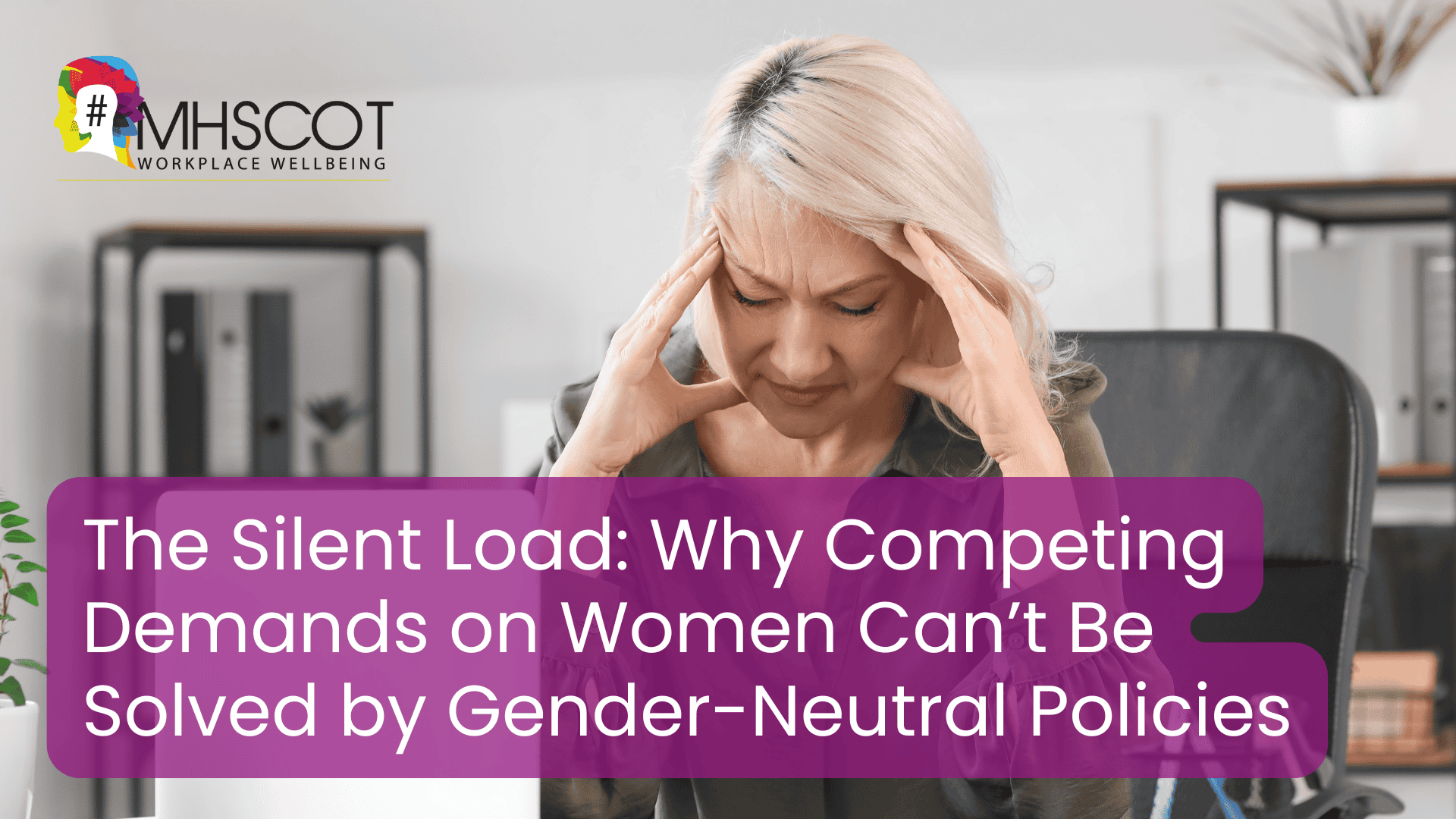
The Silent Load: Why Competing Demands on Women Can’t Be Solved by Gender-Neutral Policies
1 minute readIn today’s workplace, gender-neutral policies are often hailed as progressive. But here’s the problem: when you apply the same rules to everyone in unequal circumstances, you don’t create fairness - you deepen inequality.
And for many women, especially those in midlife, the competing demands are relentless.
Juggling Act: The Unseen Labour of Women
While striving to excel in their careers, many women also carry the emotional and practical load of caring responsibilities. They are the ones:
- Caring for children and navigating teenage years
- Supporting elderly parents through illness, hospital appointments, and end-of-life care
- Managing households and still showing up with a smile on the Zoom call
This so-called “sandwich generation”, women often in their 40s and 50s are being squeezed between two ends of the care spectrum. And that’s before we talk about what’s going on with their own health.
Menopause: The Workplace Taboo
Perimenopause and menopause affect every woman differently, but symptoms like brain fog, sleep disruption, anxiety, memory issues, hot flushes, and low mood can be debilitating. Despite this, many feel pressure to keep quiet, power through, or fear being judged as less capable.
This is happening during peak career years. - when women are stepping into leadership roles, mentoring others, and being seen as role models. But too often, they’re suffering in silence.
Why Gender-Neutral Often Isn’t Gender-Fair
When policies are designed with a ‘one-size-fits-all’ lens, they fail to address the specific challenges women face. For example:
- Flexible working policies that assume equal division of labour at home
- Mental health strategies that ignore the biological and emotional toll of menopause
- Return-to-work schemes that don’t account for confidence loss after long-term caring roles
So, what can be done?
Workplaces must move beyond performative inclusion and into practical, proactive support. That means:
- Normalising conversations about menopause and offering workplace adjustments
- Recognising the impact of caring responsibilities in HR and wellbeing policies
- Providing leadership development that considers women’s lived realities
- Designing benefits and supports with equity, not just equality, in mind
Because when we design workplaces that support women better, we support everyone better.
Let’s stop pretending that treating everyone the same is the answer. It’s time to acknowledge the real, complex lives women lead—and start showing up for them in meaningful ways.
What are your thoughts?
Have you experienced the weight of competing demands at work and home? What would truly help?
Written by MHScot Team Member, Amanda